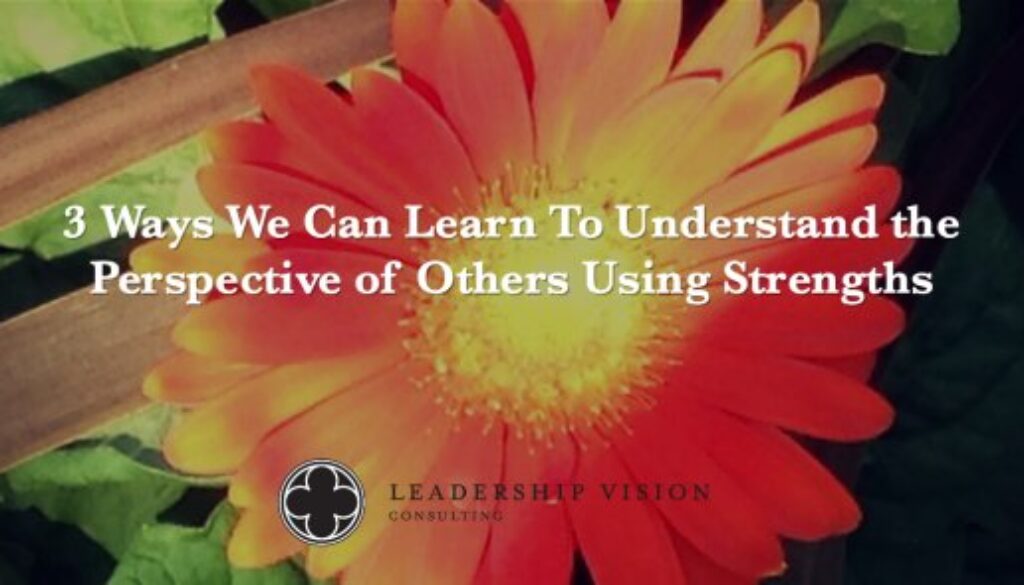Through Their Eyes: Using Strengths to Understand Perspectives
I believe in serendipity. The idea that happenstance occurs at the exact moment you need it the most. And it came to me this morning, as I tidied up my daughter’s room. I had a blog post to write, but it was much easier to be distracted by the hum of an ordinary routine.
So I began straightening her bedspread (left in disarray in a rush to beat her brother to breakfast), un-balling yesterday’s clothes (apparently it is immensely time-saving to undress in one swift motion leaving underwear firmly attached to inside-out pants) and picking up remnants of the shredded paper art (MUCH better than last week’s glitter disaster).
My last task in a worn down daily pattern of movements, involves tucking her ipad out of sight and away into the designated ipad drawer (ok I designated it…she prefers under the table). But this time, I turned it on and went to her photos page. I’m glad that I did.
Unique Lens of Strength
I started scrolling through all 375 of her memories. HER recollections. HER experiences. HER windows into life.
At first, I had no idea what any of the pictures were. I didn’t recognize places, faces, or the context. So I slowed down and started from the beginning. At each photo, I paused. Studied the details, and traced the images alongside my own memory to put the photos into the context of our lives.
Eventually, they began to make sense. I had long since passed over these little moments in time, because they didn’t belong to me. But she stopped to make them worthy of her memory. They mattered. All of them. The doorknobs, cactuses, floor tiles, roller coasters, random strangers and flower petals. These raw images symbolized her perspective and told her story.
The significance of this moment, on an otherwise insignificant day hit me. Not just as a parent, but as a human being. It is so easy to dismiss or ignore the perspective of others when it is not our own. With others, we often revert to feigned understanding to avoid real engagement, crucial conversations and necessary conflict.
It is crucial to remind ourselves that we each view and approach the world with a unique lens of strength.
Not only is it important to first understand the complexity of our own view; how we think, feel, find motivation, and derive satisfaction. But it is also essential to broaden our scope of observation and acceptance to include the meaningful perspective of others.
This is hard to do. Particularly when someone has a strengths set that is different from what we know and that can challenge the way we make sense of the world.
So how can we learn to see and understand the perspective of others using Strengths?
Stay curious about people. Do not assume.
The biggest mistake we can make with the strengths language is to label, prescribe, and judge. Instead Ask things like,
“With your strengths, what do you see in this situation that I might be missing?” or “What strengths have you leveraged recently either personally or professionally?”
It’s amazing what you will learn about people when you make the effort to wonder.
Invite strengths conversations regularly.
Make the language of strengths a common occurrence with those around you. The behaviors of strength can promote understanding, diffuse tension, and make sense of conflict. Ask things like,
“How does your strength of Analytical work in a situation like this?” or “Do you think my Activator and your Deliberative could be getting stuck here?”
Strengths have a way of respectfully accounting for the divergence of thought while still cracking open difficult conversations.
Map it out. Get to know those around you.
Have the strengths of the entire team or group accessible to everyone. Post them in workplace sites or bring them to meetings so that everybody becomes accustomed to using and listening for the behaviors of strength.
“Tell me more about your strength of Focus and how that helps our team.” “Is there anyone on our team who thinks their strengths would align with this upcoming project?”
Our greatest learning can come from simple observation.
When you begin to embrace the language of strengths, you see it everywhere and in everything. You can try to rub your eyes and re-adjust your view so that you see the world and the people around you like before. But you can’t. It’s impossible. You become curious, not presumptuous. You learn to appreciate rather than to criticize. You seek to understand rather than classify or dismiss.
So, when I asked my daughter to tell me about her pictures, she gladly expanded on the details and significance of each one. I stopped to listen.
Really listen.
And what I found was that the random strangers, were people she thought were cool. The flower petals actually had 4 different colours. The cactuses came in all sorts of weird shapes and the roller coaster terrified her.
You see I was there with her the entire time. I saw those things too. Or at least I thought I did. But I’m glad I took the time to really see them all again.




